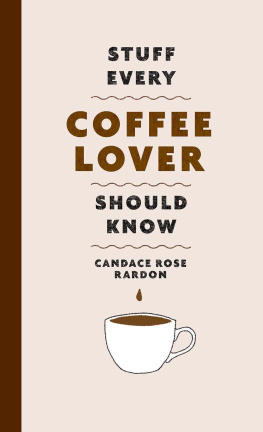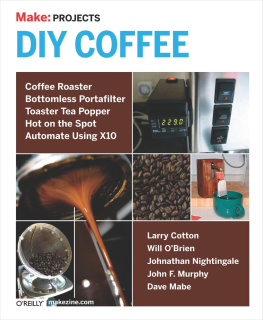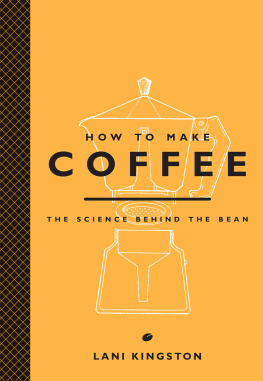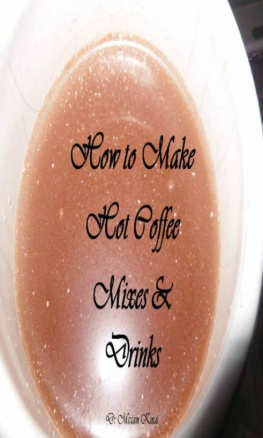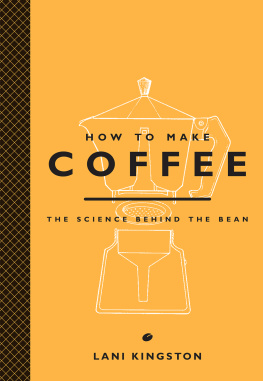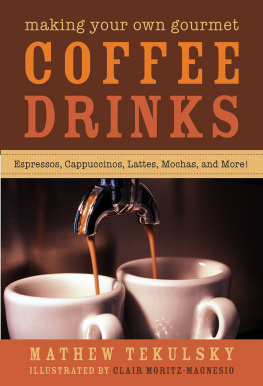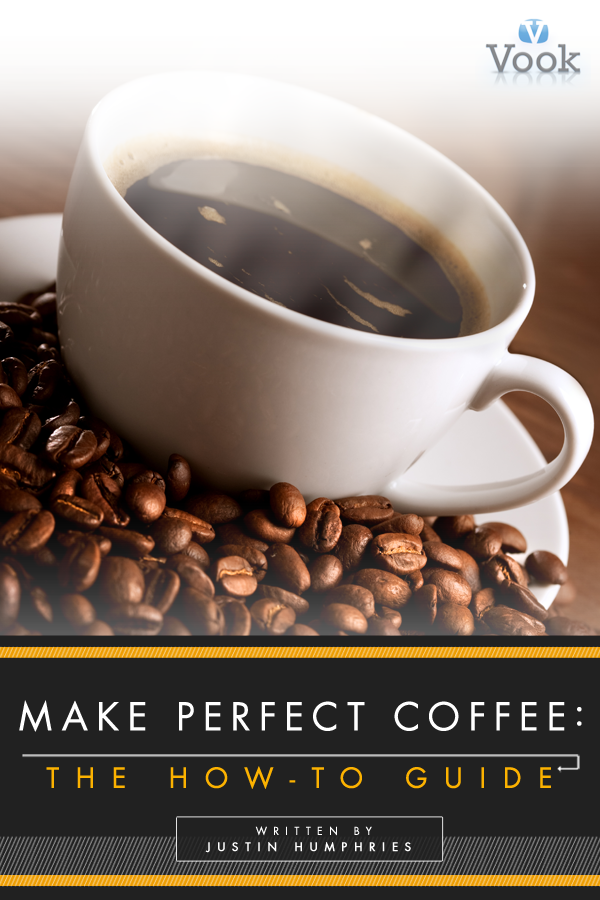Credits & Copyright
Author Profile:
Justin Humphries - Justin Humphries aka "Miracle Jones," received his bachelors degree in English from the University of Texas in 2003. He has worked as a video store clerk, a dishwasher, an advertising copywriter, a prep chef, an apprentice butcher, a barback, a bartender, a barista, a nanny, an incense salesman, an insurance photographer, a relationship columnist, a paralegal, a ghostwriter, and a chocolatier. He enjoys writing novels and playing very, very complicated board games. He divides his time between Austin, Texas, and New York.
Web Links:
- Author Website
- Author Facebook
Make Perfect Coffee: The How-To Guide
by Justin Humphries
Some people drink coffee just to wake up in the morning. For the rest of us, when a cup of coffee tastes bland or off the mark, serious disappointment follows. With Make the Perfect Coffee: The How-To Guide, youll follow along eight chapters learning to make the kind of coffee that excites you right at home! Youll learn how to choose the right beans, find the best coffee maker, and brew the perfect drip coffee. No more spending several dollars on each gourmet cup at the cafe! Soon youll be able to make all of the drinks in your own kitchen, impressing your guests. Best of all, youll save precious time and money skipping the coffee house!
Copyright 2011 Vook, Inc.
Compilation copyright 2011 Vook, Inc.
Vook is a registered trademark of Vook, Inc.
Chapter 1
Select the Right Beans
T he first step to making great coffee is to find the right beans. Its a simple fact that delicious coffee comes from delicious beans. Whether you grind your own or buy them ground, there are thousands of different kinds of beans and blends, each one boasting a unique flavor. Additionally, the way the beans are roasted can affect everything about your coffee, from its caffeine content to its bitterness.
Five Different Kinds of Coffee Roasts
Roast refers to how long the coffee beans are cooked and how much of the oils are burned away in the roasting process. Generally speaking, the lighter the roast, the more you will be able to taste the natural flavors of each bean. Different beans taste better when roasted at different temperatures. A good rule of thumb is that the better the beans, the lighter you will want them roasted.
- Light Roast: Lightly roasted beans actually contain more caffeine per scoop than darkly roasted beans. A light roast is as crisp as cinnamon, though it might have a slightly bitter taste.
- Medium Roast: This creates a balanced flavor, which is great for blends. Medium roasted coffee often has a sweeter, smokier flavor than a light roast.
- Dark Roast: At this point, the coffee becomes heavier and spicier, taking on the flavor of the roasting process itself. Very smooth. This is your classic coffee taste.
- French Roast: Basically all French roast coffee tastes the same because French-roasted beans have been cooked until they have begun to burn. Heavy, rich, strong, and eye-opening.
- Espresso Roast: A specific blend of beans roasted until the only way to get flavor out of them is to grind them incredibly fine and infuse them with high-pressure steam. This is as dark as it gets.
Coffee is grown in warm climates all over the world, but most coffee you can buy easily comes from Latin America, Africa, and Indonesia. The best way to find your favorite beans is to experiment.
The fresher your beans are, the better your coffee will taste. Store your beans in an airtight container in a cool place. The flavor of your coffee will change dramatically as a result of exposure to heat or moisture, especially once your beans have already been ground. Never freeze your beans or your ground coffee, because this can dry up the oils and make your coffee lose its flavor.
If you have your own coffee grinder, dont grind all your beans the moment you bring them home from the store. Instead, grind fresh beans every time you make a pot of coffee. This will ensure that the flavorful coffee oils are released right as your coffee brews.
TIP
Coffee beans can smell intoxicating, and your nose is your best guide toward finding coffee that you will like. Another way to get an idea of the quality of your beans is to eat one. They should taste robust, smooth as chocolate, and oily on the tongue. Good beans are shiny. They are not splintered, nor are they chipped around the edges.
Chapter 2
Coffee and Espresso Makers
T he first thing to consider when you are picking out a machine is what kind of drinks you like the most.
If you like lattes, cappuccinos, Americanos, and iced mochas, then an espresso machine is what you are looking for, since all of these drinks use espresso as their base. If you simply like good coffee, then all you really need is a good coffee maker. However, even coffee makers come in all shapes and sizes.
Kinds of Coffee Makers
There are several kinds of coffee makers available on the market:
- Drip Coffee Makers: This basic coffee maker prepares drip coffee in sizes ranging from four to 20 cups. Drip coffee makers let you make coffee for a crowd as easily as for yourself, and they are the most technologically advanced machines for your dollar. For a drip machine, however, you will also need to buy filters (paper, cloth, or metal).
- Pod Machines: Pod machines allow you to make single serving cups of coffee with relatively little mess or hassle. Pod machines can be pricy, but many coffee roasters make gourmet and artisanal coffee blends that are only available one cup at a time.
- French Press: A very simple and yet effective device, a French press is a pneumatic press with a permanent filter screen attached. To make French press coffee, scoop coffee grounds into the press, and then pour in boiling water. Let the coffee steep for five to 10 minutes and then push down the plunger. This makes dark, rich, and satisfying coffee many connoisseurs prefer.
- Espresso Machine: Espresso machines can be very expensive. A top-of-the-line model can cost almost as much as a new car. However, an espresso machine is the only way to make espresso because only an espresso machine can build enough pressure to extract the espresso from the powdered grounds. Like cars, espresso machines come in both manual and automatic models.
If you are only making coffee for one, then a pod machine or a French press might be perfect for you. However, if you intend to make coffee for family and friends, it can quickly become frustrating if you are only able to make one cup at a time.
Before you buy an espresso machine, make sure you do the research and buy one that suits all of your needs. If you drink lattes every day, you can save a lot of money by investing in your own machine, but dont forget to factor in hidden costs like maintenance and cleaning.
TIP
The real secret to great coffee is an impeccably clean coffee maker or espresso machine. You should clean your coffee maker at least once a month and your espresso machine after each use. To clean your coffee machine, run one cycle with just water, another cycle with a solution of water and vinegar, and then another cycle of just water to flush it out again. Espresso machine cleaning kits and soap are available online or in most specialty stores.
Chapter 3
Make Perfect Coffee


